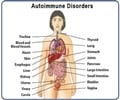Review the side-effects of Sarilumab as documented in medical literature. The term "side effects" refers to unintended effects that can occur as a result of taking the medication. In majority of the instances these side-effects are mild and easily tolerable, however sometimes they can be more severe and can be detrimental.
If the side effects are not tolerable adjusting the dosage or switching to a different medication can help to manage or overcome side effects. If you have any doubts or questions, we recommend seeking advice from your doctor or pharmacist.
Gastrointestinal: Severe stomach pain, black or bloody stools, vomiting
Cardiovascular system: Chest pain or tightness in the chest
Central Nervous System: Dizziness or fainting
Respiratory: Sorethroat, stuffy or runny nose, wheezing or difficulty in breathing, coughing up blood, pneumonia
Skin: Rash, hives, blistered or peeling skin, red or swollen skin (cellulitis), injection site reactions such as erythema and pruritus
Others: Serious infections, opportunistic infections like candidiasis and pneumocystis, urinary tract infection with blood in urine, difficulty or burning sensation while passing urine, muscle pain, fever, weakness, swelling of lips, tongue or face due to allergic reaction, increase in liver enzymes.
• Patients are advised to report at regular intervals to their rheumatologist for monitoring the improvement in the disease and sign of infection, if any.
If the side effects are not tolerable adjusting the dosage or switching to a different medication can help to manage or overcome side effects. If you have any doubts or questions, we recommend seeking advice from your doctor or pharmacist.
Gastrointestinal: Severe stomach pain, black or bloody stools, vomiting
Cardiovascular system: Chest pain or tightness in the chest
Central Nervous System: Dizziness or fainting
Respiratory: Sorethroat, stuffy or runny nose, wheezing or difficulty in breathing, coughing up blood, pneumonia
Skin: Rash, hives, blistered or peeling skin, red or swollen skin (cellulitis), injection site reactions such as erythema and pruritus
Others: Serious infections, opportunistic infections like candidiasis and pneumocystis, urinary tract infection with blood in urine, difficulty or burning sensation while passing urine, muscle pain, fever, weakness, swelling of lips, tongue or face due to allergic reaction, increase in liver enzymes.
Other Precautions :
• Monitoring of blood counts (mainly for a neutrophil count and platelet count), liver enzymes, blood cholesterol levels are required during 4 to 8 weeks after starting the treatment and for every 3 months during the therapy.• Patients are advised to report at regular intervals to their rheumatologist for monitoring the improvement in the disease and sign of infection, if any.









